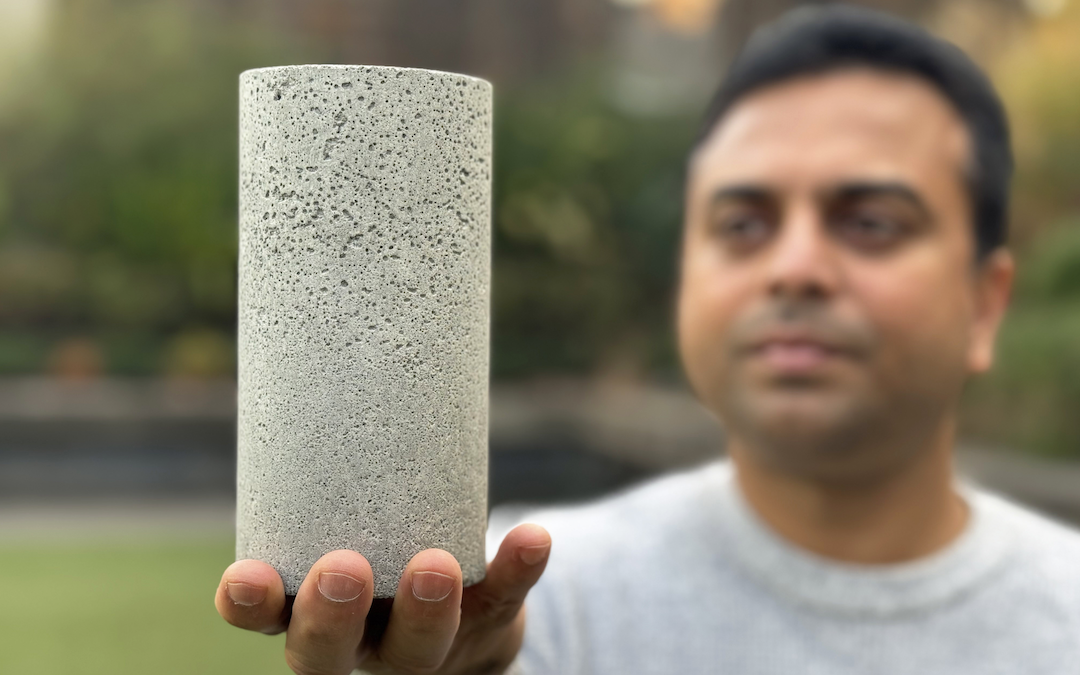A low-carbon concrete project has been found to recycle double the amount of coal ash when compared to current methods.
The initiative, developed at RMIT University, will halve the amount of cement required in production and significantly reduce global emissions if adopted by industries such as construction.
A concrete overview
Concrete is one of the most common manufacturing materials on the planet, commonly used in the making of cement. Currently, the production of concrete requires the use of long rotating kilns the length of two football fields, according to the Science Museum UK. This process releases a large amount of CO2, due to the coal needed to heat the kilns, and consumes around 10 percent of global industrial water supplies.
Even with a growing shift to renewable energy, it is likely that coal will remain as part of the global energy future, with cement production making up 8 percent of worldwide carbon emissions.
In fact, in 2022 alone, over 1.2 billion tonnes of coal ash were released by coal-fired power plants. In Australia, this makes up nearly a fifth of all waste

Low-carbon plans
Focused on finding a renewable solution to this energy-draining resource, engineers from RMIT partnered with AGL’s Loy Yang Power Station and the Ash Development Association of Australia to substitute 80 percent of the cement in concrete with coal fly ash.
According to RMIT project lead Dr Chamila Gunasekara, low carbon concrete typically replaces no more than 40 percent of its cement with coal ash, making this new project a significant step towards green energy.
“Our addition of nano additives to modify the concrete’s chemistry allows more fly ash to be added without compromising engineering performance,” he explains.
Lab studies have also revealed that this method can be applied when recycling lower grade ‘pond ash’, which is found in coal slurry storage ponds at power plants.
“Compared to fly ash, pond ash is underexploited in construction due to its different characteristics. There are hundreds of megatonnes of ash waste sitting in dams around Australia, and much more globally,” says Dr Gunasekara.
The team have created large concrete beam prototypes using fly ash and pond ash, finding that both meet Australian Standards for engineering performance and environmental requirements.
“It’s exciting that preliminary results show similar performance with lower-grade pond ash, potentially opening a whole new hugely underutilised resource for cement replacement,” Dr Gunasekara says.
“These ash ponds risk becoming an environmental hazard, and the ability to repurpose this ash in construction materials at scale would be a massive win.”

The RMIT team: (l-r)) Dr Yuguo Yu, Professor Sujeeva Setunge, Dr Dilan Robert, Dr Chamila Gunasekara, Dr David Law. Credit: Michael Quin, RMIT.
Moving forward
In order to determine the long-term resilience of this low-carbon concrete, the team employed a pilot computer modelling program developed by RMIT and Dr Yogarajah Elakneswaran from Hokkaido University. The modelling technology was able to predict the time-dependent performance of these concrete mixtures, with insightful results.
Dr Yuguo Yu, an expert in virtual computational mechanics at RMIT, reveals that a major challenge has been determining how newly developed materials will stand up over long periods of time.
“We’ve now created a physics-based model to predict how the low-carbon concrete will perform over time, which offers us opportunities to reverse engineer and optimise mixes for numerical insights,” Yu explains.
The research was published in the journal Cement and Concrete Research, exploring how the different elements within low-carbon concrete will interact and wear over time.
“We’re able to see, for example, how the quick-setting nano additives in the mix act as performance booster during the early stages of setting, compensating for the large amounts of slower-setting fly ash and pond ash in our mixes,” Gunasekara says.
“The inclusion of ultra-fine nano additives significantly enhances the material by increasing density and compactness.”
The modelling represents a major step towards the integration of digitally assisted simulation in the infrastructure design and construction industries.
The team hopes that this technology will support the welcome adoption of low-carbon concrete into communities and industries.
To read about renewable energy programs in the mining industry, click here.
Featured image: Dr Chamila Gunasekara holds a sample of the low-carbon concrete. Credit: Michael Quin, RMIT.

